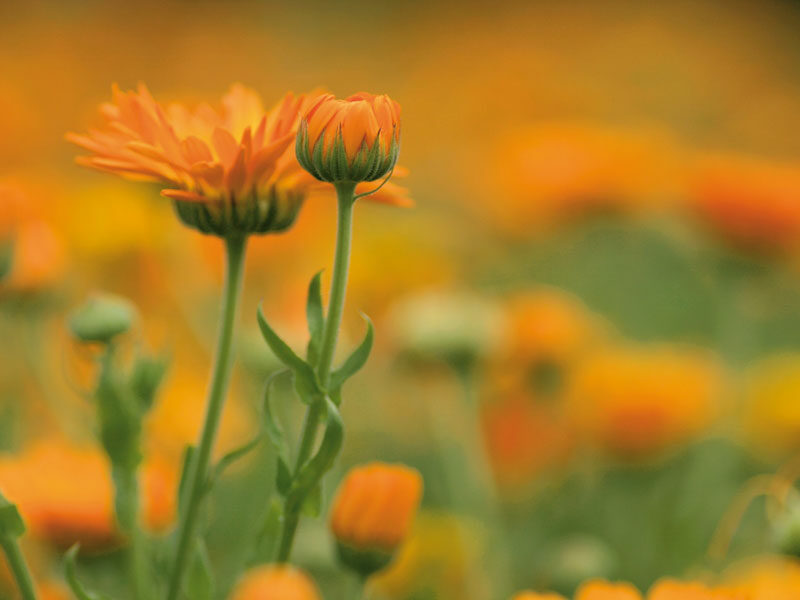Calendula (Calendula officinalis)

The Ringelflower, which should not be missing from any cottage garden, probably originates from the Mediterranean region. However, the annual composite has a long tradition as a valuable medicinal herb.
In the 12th century, Hildegard von Bingen described the marigold very comprehensively in her medical writings. While in the Middle Ages it was mainly used internally for liver and gallbladder problems and nausea, today we mainly use calendula externally for the treatment of wounds, inflammations of the skin and mucous membranes as well as injuries.
The value-determining ingredients are found in the petals. These are mainly flavonoids, saponins, carotenoids and essential oil. The flowers are prepared as a decoction, tincture, ointment or oil.
Extracts of calendula have a germicidal effect on bacteria, viruses and skin fungi, are anti-inflammatory, promote wound healing and skin regeneration and are also considered to be tissue-draining. Calendula is therefore the medicinal herb per se for lacerations, bruises or burns, purulent ulcers, skin and mucous membrane damage.